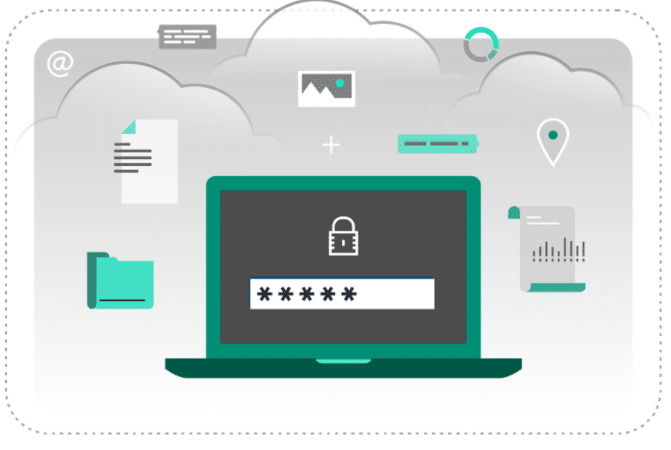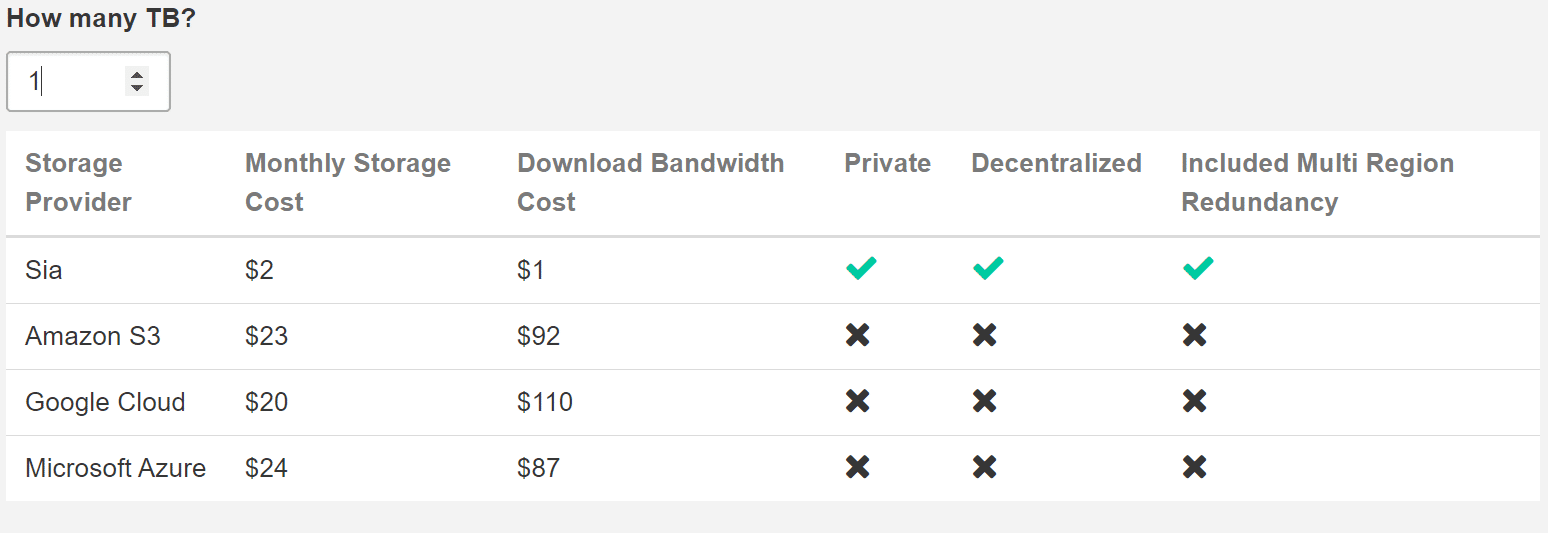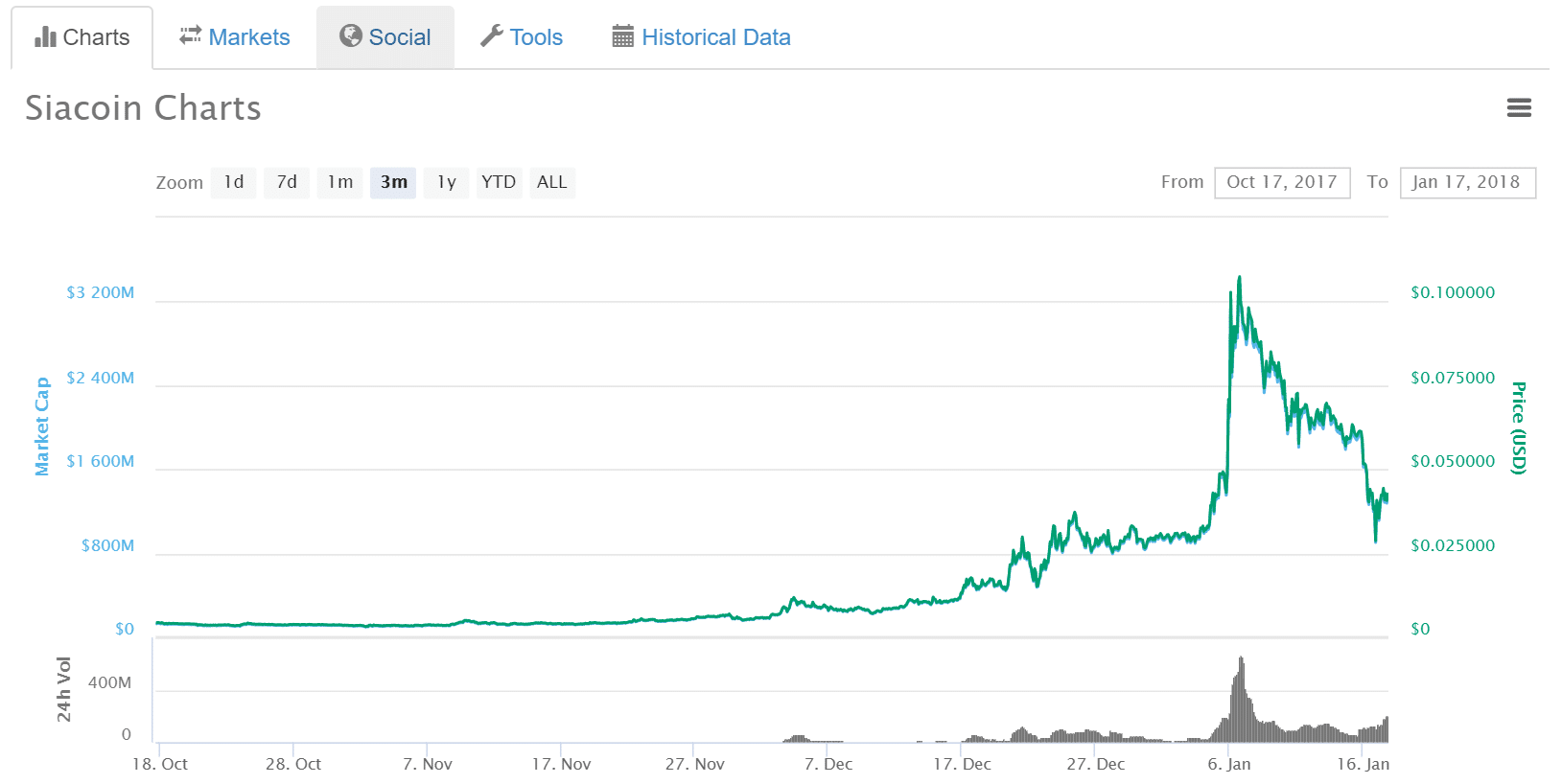What is Siacoin?
Remember that old Apple marketing campaign when the iPhone was in its infancy and the app store craze was in full swing? “There’s an app for that.” Well, blockchain has taken the world for a ride with its own rise in popularity, and as use cases and adoption abound, a similar mantra could ring true: there’s a crypto for that.
Indeed, it seems like development teams are pushing crypto into any existing industry that might have a use case for blockchain. We’ve covered a few of these before, those projects with actual, working services, and we’ll be covering one of those in more depth with this guide.
Today, we’ll take a look at Siacoin (Sia for short). Sia provides a decentralized cloud storage option that competes with centralized legacy competitors such as DropBox, Amazon, Apple, and Microsoft. Using Sia, anyone can host or access encrypted storage through the platform, and all contracts, storage proofs, and transactions are verifiable using the blockchain’s public ledger.
How Does Siacoin Work?
On a fundamental level, Sia takes cloud storage out of the hands of monolithic providers and puts it back into the hands of individuals. This offers users a peer-to-peer storage ecosystem that allows anyone to rent out or take advantage of spare hard drive space.
All services on the network are paid in Siacoin, and all transactions in the Sia ecosystem are secured through filing contracts and storage proofs.
Storage Ecosystem
Sia’s platform consists of both providers (hosts) and clients (users). Through the platform, users commission storage space from hosts, and the hosts are compensated for their services in Siacoin.
The ecosystem will provide flexible storage options and will be largely free-market driven. Providers can set their own prices, advertise their level of reliability, and set standards for penalties should problems arise in storage or files be lost. Additionally, they can choose to deny a client storage if they’re uncomfortable with the nature of that client’s data (e.g. sensitive, illegal, or ethically questionable materials).
 Clients also have a series of protections in place to safeguard their own interests. They have the option to split copies of their data between multiple providers to ensure file security and retrievability. For instance, if a provider were to lose a client’s file or simply refused to release it, the client could retrieve his/her files from another provider’s storage. Both parties can also agree upon contractual penalties that a provider will incur if s/he doesn’t provide proof of storage or withholds a client’s data.
Clients also have a series of protections in place to safeguard their own interests. They have the option to split copies of their data between multiple providers to ensure file security and retrievability. For instance, if a provider were to lose a client’s file or simply refused to release it, the client could retrieve his/her files from another provider’s storage. Both parties can also agree upon contractual penalties that a provider will incur if s/he doesn’t provide proof of storage or withholds a client’s data.
Clients have the option to reward providers with uptime incentives on top of the additional storage fees, as well. With these payments, clients incentivize providers for being more attentive to their needs, including faster document uploads, enhanced upkeep to process requests, etc.
File Contracts
When a client and a provider wish to conduct business, they agree to draft a file contract. While all data is stored on a provider’s hard drives, the contracts for these arrangements are stored on Sia’s blockchain.
These file contracts define the terms of a storage agreement and ensure that both parties conduct their business accordingly. Since the contract is stored on the blockchain public ledger, the original arrangement is verifiable and immutable once it has been submitted to the network.
As we went over above, contractual terms are flexible based on circumstance. If a client is willing to sacrifice reliability for affordability, it’s within his/her right. And if a provider wants to charge more for storing mass amounts of data, and the client agrees to the terms of the contract, so be it. Users on the platform must govern their own provider choices based on a host’s reputation and storage requirements, and likewise, a provider must judge whether or not they can accommodate a client based on that client’s needs and demands.
Still, file contracts add a much-needed layer of security to the network. They define the duration of an agreement, how often a provider must submit proof of storage outputs to the network, and an agreed upon payout.
When you create a contract as a client, you upload a balance of Siacoin into the contract for future payments. Thus, whenever you upload a document for storage, some of the money from this balance is transferred to the host. If you don’t use all of your balance and the terms of a contract end, the remaining coins are returned to your wallet.
Proof of Storage
Sia implements proof of storage to protect clients from fraudulent or malicious providers. In order to receive payment, a provider must present a certain number of proofs to the network within time frames specified by the terms of the file contract.
If a provider fails to provide proof of storage within the window provided, the proper payment is sent to a missed proof address until proof is submitted, and the provider may be penalized further for his/her negligence. Additionally, if a provider misses too many proof of storage mandates, the contract may terminate entirely.
When, however, a provider successfully provides proof of storage, the contract awards payment to a valid proof address. A series of spend conditions must be met before a provider can access these coins, including network signatures and time locks.
Why Sia?
Sia’s platform offers a number of benefits compared to traditional cloud storage services.
- Privacy: All data processed on Sia’s network is encrypted. Unless a provider has the data’s private key, they cannot access the stored files, meaning you’re always in complete ownership/control of any materials you commit to storage through Sia’s platform. Under traditional models, the companies that host cloud storage have complete access to any data you relinquish to their servers.
- Affordability: Sia coin offers flexible, market-driven pricing options for its users. There’s no one-size-fits-all option for clients to choose from. For example, 1TB of data storage using Sia can cost as little as $2 a month, compared to Amazon’s services which run at $23 a month.
- Security: Again, all data on Sia is encrypted and processed through a decentralized network, keeping user material secured from the vulnerabilities of a centralized system. Moreover, Sia offers redundant storage. In splitting uploaded documents between multiple providers, Sia protects client data from a single point of failure.
Sia Trading History
At the time of writing, the market is in a massive correction, so along with the rest of the market, Sia isn’t doin’ too hot. Actually, it’s swimming against the current in a sea of red, as it’s one of only a handful of coins currently in the green in the market cap top 100.
Siacoin recently experienced explosive growth. It was trading at less than a cent in November 2017, but in a December-January runup, it jumped to an all time high of $0.11. Currently, it ranks 23rd on CoinMarketCap with a $0.04 price tag.
Where to Buy, Where to Store
You can buy Siacoin in either BTC or ETH trading pairs from Bittrex, Upbit, or Poloniex. The former two house the bulk of Siacoin trading at 48% and 42% with both BTC and ETH options, respectively, while Poloniex accounts for a humble 9.26% with its sole BTC trading pair.
As of now, the only storage option for Siacoin comes in the form of its official wallet. You can find a download for its 64bit Linux, Windows, and Apple software wallets on Sia’s website.
Roadmap and What’s to Come
In the short term, the Sia team is looking to immediately improve services on the Sia network. This includes: shortening contract processing times from 60 minutes to 5 minutes, file recovery using wallet seeds, file sharing between Sia users, partial/fragmentary downloads, general UI/UX improvements, and bug fixes.
In the medium-to-long term, they want to: implement video streaming, allow users to blacklist/whitelist hosts, scale the service to support files of greater than 10TB at a single time, add a bandwidth limiter, allow users to file share with platforms outside of Sia, and implement light client and mobile support.
Final Thoughts
Siacoin is a refreshing project in a space that is full of promises, vapourware, and unproven products. The Sia team actually has a product that you can access today, and while there’s still room for improvement as the roadmap suggests, the service is still up and running.
Further, Sia offers a more flexible storage option for its users compared to other cloud storage providers. Its peer-to-peer ecosystem is directly in line with the decentralized, liberating nature of blockchain technology. The project’s endgame “is to become the storage layer of the decentralized internet, ensuring privacy and redundancy through decentralization, and entirely replacing existing cloud storage providers.”
So as Sia–and blockchain–matures going into 2018, we’ll see if it can cut out the middleman and achieve its long-term goal as the new industry standard for cloud storage.
Additional Siacoin Resources
The post What is Siacoin? A Beginner’s Guide to Decentralized Cloud Storage appeared first on CoinCentral.

TheBitcoinNews.com – Bitcoin News source since June 2011 –
Virtual currency is not legal tender, is not backed by the government, and accounts and value balances are not subject to consumer protections. TheBitcoinNews.com holds several Cryptocurrencies, and this information does NOT constitute investment advice or an offer to invest.
Everything on this website can be seen as Advertisment and most comes from Press Releases, TheBitcoinNews.com is is not responsible for any of the content of or from external sites and feeds. Sponsored posts are always flagged as this, guest posts, guest articles and PRs are most time but NOT always flagged as this. Expert opinions and Price predictions are not supported by us and comes up from 3th part websites.
Advertise with us : Advertise
Our Social Networks: Facebook Instagram Pinterest Reddit Telegram Twitter Youtube














